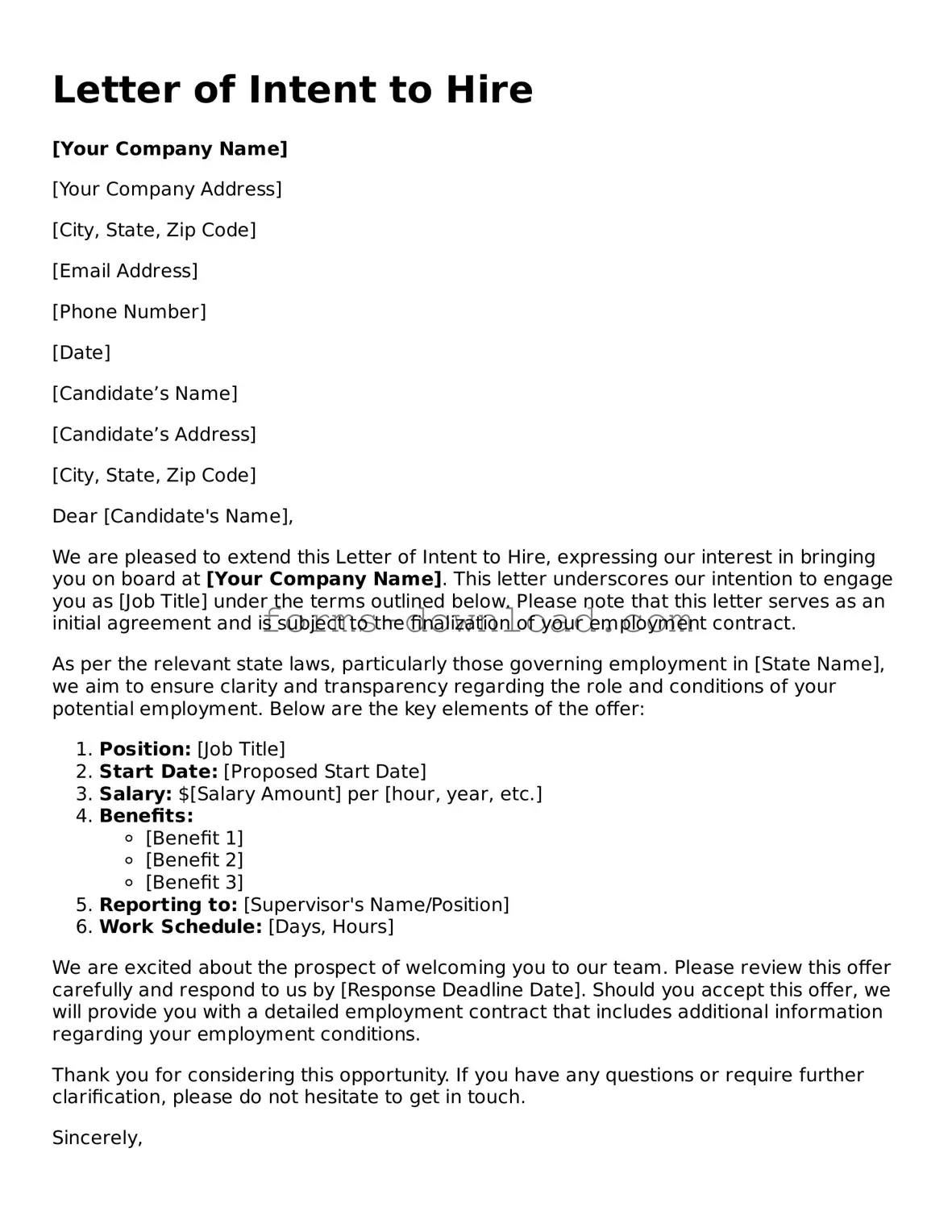Letter of Intent to Hire
[Your Company Name]
[Your Company Address]
[City, State, Zip Code]
[Email Address]
[Phone Number]
[Date]
[Candidate’s Name]
[Candidate’s Address]
[City, State, Zip Code]
Dear [Candidate's Name],
We are pleased to extend this Letter of Intent to Hire, expressing our interest in bringing you on board at [Your Company Name]. This letter underscores our intention to engage you as [Job Title] under the terms outlined below. Please note that this letter serves as an initial agreement and is subject to the finalization of your employment contract.
As per the relevant state laws, particularly those governing employment in [State Name], we aim to ensure clarity and transparency regarding the role and conditions of your potential employment. Below are the key elements of the offer:
- Position: [Job Title]
- Start Date: [Proposed Start Date]
- Salary: $[Salary Amount] per [hour, year, etc.]
- Benefits:
- [Benefit 1]
- [Benefit 2]
- [Benefit 3]
- Reporting to: [Supervisor's Name/Position]
- Work Schedule: [Days, Hours]
We are excited about the prospect of welcoming you to our team. Please review this offer carefully and respond to us by [Response Deadline Date]. Should you accept this offer, we will provide you with a detailed employment contract that includes additional information regarding your employment conditions.
Thank you for considering this opportunity. If you have any questions or require further clarification, please do not hesitate to get in touch.
Sincerely,
[Your Name]
[Your Position]
[Your Company Name]
